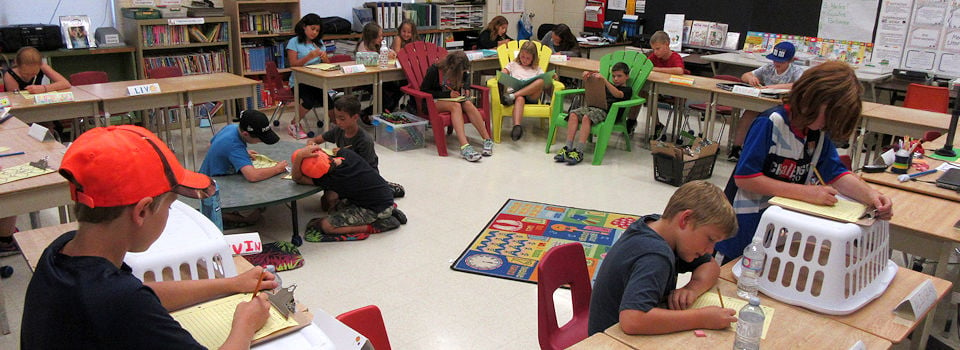Right now, the class is in the middle of an interesting inquiry project.
Students in Grade 5 are working in groups of five, researching what it would have been like to live in ancient China, Egypt or Greece. Based on their research, each group is building a scale model of a fictional colony belonging to one of these civilizations and creating a Power Point presentation, BLOG or GLOG (graphic blog) to introduce their civilization and explain the various elements of their model. This is a Social Studies project, designed to complement the work on ancient civilizations our Grade 5 students are doing with Mrs. Torrey.
Students in Grade 6 are doing the same project, but their work is based on their current science unit (space). These students are working in groups of six, researching information about either Mars or the Moon and what humans would need to travel and live there. They are using this information to construct scale models of colonies that might exist in these two places, circa. 2030 (the year NASA hopes to take astronauts to Mars).
All group members must be involved in planning, research, construction and presentation of their project. In order to be cost-effective and environment-friendly, students are repurposing items from the school recycling bins to construct their models. Once the models and electronic descriptions are completed, each group will have an opportunity to present their work to the class.
Here are some photos of groups in action! (click on small photos to enlarge them).
We will post another update later, with pictures of the finished products.
This project is loosely based on the Homesteading Mars Project-based Learning project: http://www.wested.org/pblnet/exp_projects/homesteading.html
Thank you for visiting our class BLOG. If you have any questions or comments, feel free to e-mail me: mblack@mail1.scdsb.on.ca or to add a comment to this page.




















 These are the products we examined.
These are the products we examined. Raw materials from all over the world are shipped
Raw materials from all over the world are shipped Our base map, showing the flow of materials required to make and ship to North America each of the products we examined.
Our base map, showing the flow of materials required to make and ship to North America each of the products we examined.












